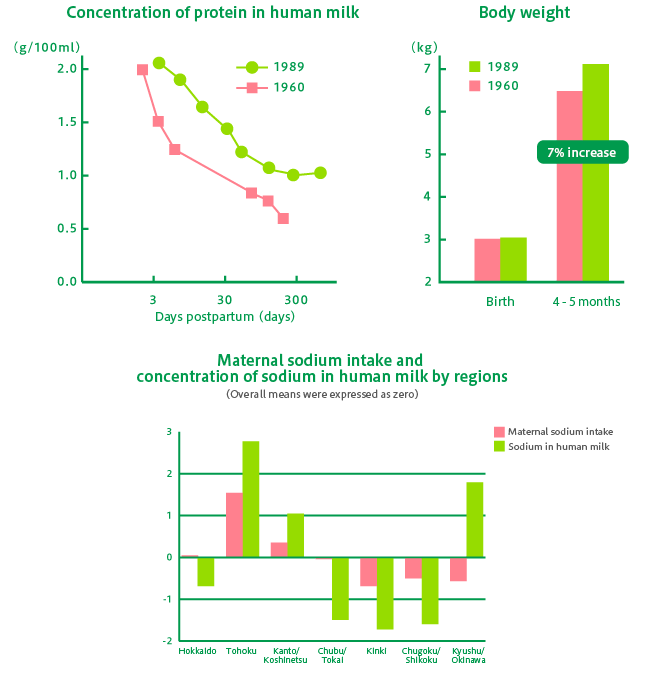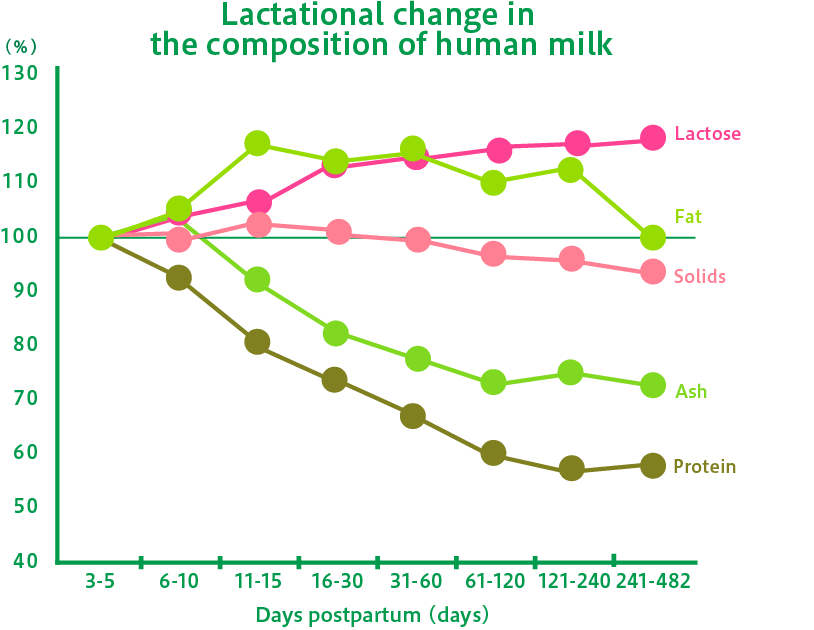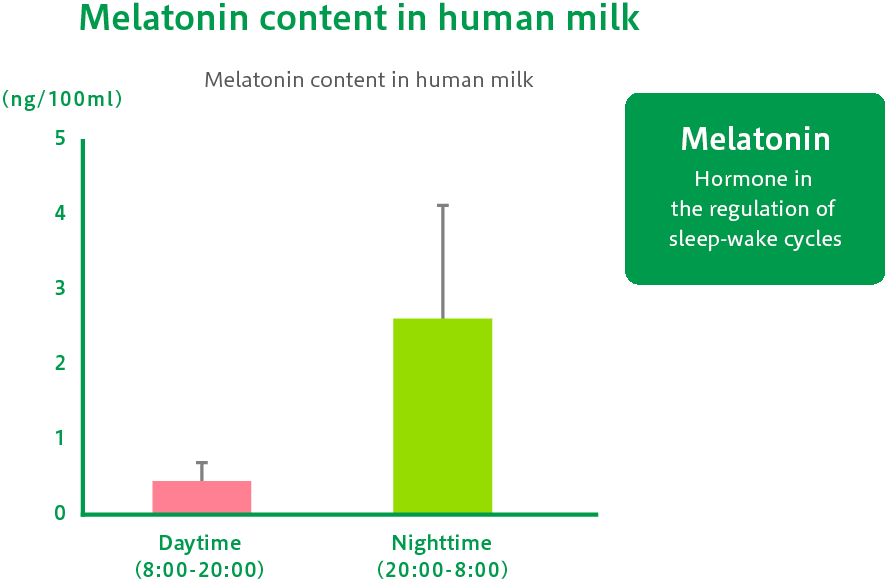 History and Latest Survey
History and Latest Survey

History
- 1960
- Administered 1st nationwide survey on breastmilk
- 1966
- Took advantage of results of survey on breastmilk to develop powered milk containing modified protein, minerals and vitamins
- 1984
- Researched taurine, an important component in the development of the brain and vision, to create a powered milk formula containing it; this is the world standard today
- 1989
- Administered 2nd nationwide survey on breastmilk
- 1990
- Researched sialic acid, a component that safeguards infants from sickness and is contained in colostrum in great amounts, to create a powered milk formula containing it
- 1995
- Administered follow-up survey for 2nd nationwide survey on breastmilk to investigate the relationship between breastmilk components and the onset of allergies in infants
- 1996
- Initiated research on breastmilk and infants’excrement
- 1998
- Researched ganglioside, a component that safeguards infants from sickness, to create a powered milk formula containing it
- 1999
- Initiated survey on the dietary habits of approx. 2,400 infants across Japan to investigate the situation surrounding their nutritional intake during their weaning phase
- 2001
- Initiated survey on the dietary habits of 300 pregnant women across Japan
- 2003
- Researched the breastmilk allergy defense factors RNA and polyamine to create a powered milk formula containing them
- 2008
- Initiated research on the diurnal variation of breastmilk components
- 2012
- Initiated research on dietary components that transfer to breastmilk
- 2013
- Initiated research on increasing immunity components in breastmilk
- 2015
- Initiated 3rd nationwide survey on breastmilk
Latest nationwide survey on breastmilk
Approximately 30 years have passed since the 2nd survey. In order to investigate the nature of the impact that changes in living and dietary habits have had on breastmilk components and the growth and development of infants, Bean Stalk Snow initiated the 3rd nationwide survey on breastmilk in Fall 2015. This survey is a joint research endeavor with Megmilk Snow Brand, and the content being surveyed was expanded over prior surveys. In addition to analyzing breastmilk components and investigating areas such as the actual living and dietary state of mothers and the state of growth and development of infants for the sample population, which consists of 1,200 pairs of mothers and their children, a follow-up survey spanning 5 years will also be conducted .
 Research on Infants
Research on Infants

Megmilk Snow Brand has continued to research breastmilk since it was still Snow Brand Milk Products in 1951. In those endeavors, the company has researched and studied the activity of milk and breastmilk, infants’excrement, and the diet of mothers in addition to analyzing the components of breastmilk. Similar endeavors by Bean Stalk Snow, which started with “research on infants,” have continued to cover the same ground as well as the research and study of infant food.
Effect of Maternal Diet on Human Milk and Infants

A comparison of survey results from 1960 and those from 1989 revealed that the level of protein concentration in breastmilk was higher in the latter year.
Additionally, the weight of infants was about 7% higher between the ages of 4 to 5 months in 1989.
This comparison showed that the changes in mothers’ diets over that roughly 30-year period have impacted breastmilk as well as infants considerably.

A comparison of survey results from 1960 and those from 1989 revealed that the level of protein concentration in breastmilk was higher in the latter year.
Additionally, the weight of infants was about 7% higher between the ages of 4 to 5 months in 1989.
This comparison showed that the changes in mothers’ diets over that roughly 30-year period have impacted breastmilk as well as infants considerably.
Lactational Change in the Composition of Human Milk

Human Milk contains various components. This research showed that as time passes in the postpartum stage, different components indicate different changes.
Intraday-Changes in the Composition of Human Milk

Research has shown that breastmilk contains components whose content in breastmilk changes between night and day.
Components of Human Milk
In addition to the nutrients needed by infants for their brain, nerves and other parts of their body to develop, breastmilk contains a variety of immunity components that keep infants protected.
| Essential for growth | Brain and neurological development | Immune-boosting |
|---|---|---|
| Protein Fat Carbohydrate Vitamins Minerals |
DHA (docosahexaenoic acid) Alpha-linolenic acid Taurin etc. |
Sialic acids Gangliosides Human milk oligosaccharides Ribonucleic acid Polyamines Nucleotides Sphingomyelins |
